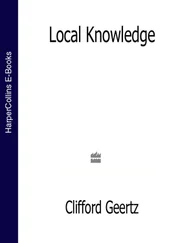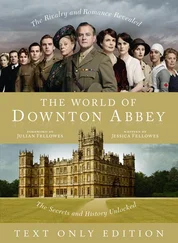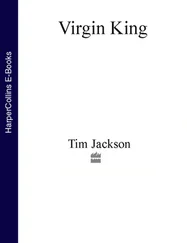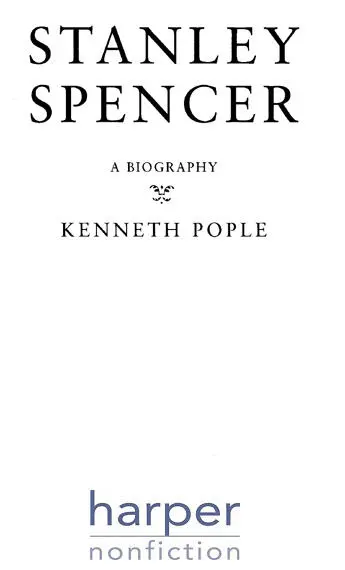
COPYRIGHT
HarperCollins Publishers Ltd
1 London Bridge Street
London SE1 9GF
www.harpercollins.co.uk
First published by William Collins Sons & Co Ltd 1991
This edition published in paperback 1996
Copyright © Kenneth Pople 1991
Kenneth Pople asserts the moral right to be identified as the author of this work
All rights reserved under International and Pan-American Copyright Conventions. By payment of the required fees, you have been granted the nonexclusive, nontransferable right to access and read the text of this e-book on-screen. No part of this text may be reproduced, transmitted, downloaded, decompiled, reverse-engineered, or stored in or introduced into any information storage and retrieval system, in any form or by any means, whether electronic or mechanical, now known or hereafter invented, without the express written permission of HarperCollins e-books.
HarperCollins Publishers has made every reasonable effort to ensure that any picture content and written content in this ebook has been included or removed in accordance with the contractual and technological constraints in operation at the time of publication.
Source ISBN: 9780002556644
Ebook Edition © JUNE 2016 ISBN: 9780008193287
Version: 2016-06-07
CONTENTS
Cover
Title Page
Copyright
Preamble
Part One: The Early Cookham Years 1891–1915
1 The Coming of the Wise Men
2 The Fairy on the Waterlily Leaf
3 John Donne Arriving in Heaven
4 Apple Gatherers
5 The Nativity
6 Self-Portrait, 1914
7 The Centurion’s Servant
8 Cookham, 1914
9 Swan Upping
10 Christ Carrying the Cross
Part Two: The Confusions of War 1915–1918
11 The Burghclere Chapel: The Beaufort panels
12 The Burghclere Chapel: Tweseldown
13 The Burghclere Chapel: The left-wall frieze
14 The Burghclere Chapel: The right-wall frieze
15 The Burghclere Chapel: The 1917 summer panels
16 The Burghclere Chapel: The infantry panels
17 The Sword of the Lord and of Gideon
Part Three: The Years of Recovery 1919–1924
18 Christ’s Entry into Jerusalem
19 Travoys Arriving with Wounded Soldiers at a Dressing Station at Smol, Macedonia
20 The Last Supper
21 The Crucifixion, 1921
22 The Betrayal, 1923
Part Four: The Great Resurrections 1924–1931
23 The Resurrection in Cookham Churchyard
24 Burghclere: The Resurrection of Soldiers
Part Five: Return to Cookham 1932–1936
25 The Church of Me
26 Portrait of Patricia Preece
27 The Dustman, or The Lovers
28 Love on the Moor
29 St Francis and the Birds
30 By the River
31 Love Among the Nations
32 Bridesmaids at Cana
Part Six: The Marital Disasters 1936–1939
33 Self-Portrait with Patricia Preece
34 Hilda, Unity and Dolls
35 A Village in Heaven
36 Adoration of Old Men
37 The Beatitudes of Love
38 Christ in the Wilderness
Part Seven: Resurgence 1940–19
39 Village Life, Gloucestershire
40 Shipbuilding on the Clyde: Burners
41 The Scrapbook Drawings
42 The Port Glasgow Resurrections: Reunion
43 The Resurrection with the Raising of Jairus’ Daughter
44 Christ Delivered to the People
Part Eight: The Reclaiming of Hilda 1951–1959
45 The Marriage at Cana: Bride and Bridegroom
46 The Crucifixion
47 Christ Preaching at Cookham Regatta
48 Envoi
Footnotes
Sources and Acknowledgements
Notes and References
Index
About the Publisher
I will make the poems of materials, for I think they are to be
the most spiritual poems,
And I will make the poems of my body and of mortality,
For I think I shall then supply myself with the poems of my soul
and of immortality. …
Walt Whitman: Starting from Paumanock
Preamble
I often think I would enjoy writing more if it were not dependent on thoughts logically following each other. But I think this limits the capacity of thought and cuts it off from something which in its undisturbed condition it can deal with and perform.
Stanley Spencer 1
IN 1938, some of Spencer’s friends and associates urged him to assemble his thoughts into an autobiography. They included his dealer Dudley Tooth, the newly appointed director of the Tate Gallery John Rothenstein, and the publisher Victor Gollancz, whose wife had been, as Ruth Lowy, one of Spencer’s fellow-students at the Slade and an early patron.
Their intention was to help him. His personal life was in shreds, his finances in disarray, his time largely devoted to saleable but ‘pot-boiling’ landscapes, his hallowed visionary work misunderstood and largely rejected. A judicious autobiography in which he could explain his ideas and motives might, it was felt, restore his prestige.
Spencer’s first reaction was one of caution. If, he argued, the public already found much of his visionary work ‘funny’, would they not find his explanations more so? Then suddenly he became enthusiastic. He would indeed write an autobiography. But it would not be assembled in the normal chronological arrangement. It would be a leisurely ‘stroll’ through his life, with pauses, diversions and retraces as the mood took him, a putting down on paper of the events, thoughts and feelings of his entire life to date. Nothing would be omitted. But neither would anything be stressed. The reader, making the journey with him, would be free to find the clues to his life, thinking and art, as Spencer himself had, often in strange and unexpected places.
The promoters were aghast. Some editing, they urged, must be accepted: ‘You are being offered a chance that you would be absolutely crazy to turn down,’ 2fumed Dudley Tooth. Spencer remained unmoved: ‘I would rather a book on myself and my work were a confused heap and mass of matter from which much could be gathered than risk something of myself being left out in the interests of conciseness.’ 3The venture collapsed.
Spencer, despite the travail of his circumstances, was blithely unrepentant. The fact was that, seized by the idea, he had already started on the project in private and was to continue it for the rest of his days. There was no discernible pattern to his writings. He would compose extensive essays in thick notebooks, but equally make random jottings in scrapbooks, on drawings, on scraps of letters, on old envelopes, on anything to hand. He seldom kept letters but would draft replies, often unposted because having sorted out his thoughts in them they became more valuable to him in his own possession than in that of the intended recipient. Others were unsent because on reflection he felt their sentiments were too confessional or, in other moods, too accusatory. By the end of his life the writings totalled millions of words, heaped into several trunks into which he would dip to reread, reannotate, re-paginate, rearrange. ‘You can burn those,’ he told his brother Percy when he knew his time was measured. But by his death, in December of 1959, the matter had passed from Percy’s hands, and in any case Percy did not want the responsibility.
To read them now is a disturbing experience, for they are expressed with an intensity he would normally have denied the public gaze. They have been sieved by scholars for references to his paintings, but, interesting though these are, they offer little in the way of immediate illumination. Spencer knew this. They are written in a code, a language of his own which appears to be the language we also use, but is not. The language was born not of secrecy but from the impossibility all artists face, in whatever medium, of finding in the words or images or symbols they are given to use that universality their imagination perceives. In them his thoughts flow like a stream of consciousness, turning and twisting, so that the reader is soon lost in a tangle of developments and, if he or she can summon the will, must go back again and again to re-chart their course over even a few of the many thousands of pages. The surprise is that to each development there is invariably a beginning and an end; however many diversions Spencer took on the way, he usually knew both his direction and his destination. His imagery, bizarre and esoteric though it often seems, captures both the exuberance of his associations and the precision with which he externalized it in his art.
Читать дальше
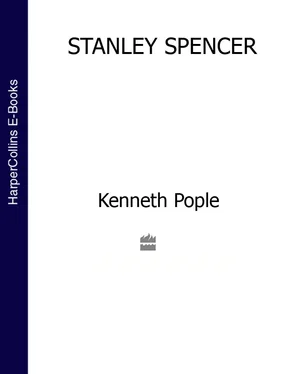


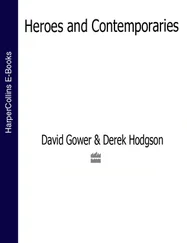




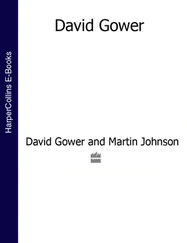

![Brian Thompson - A Monkey Among Crocodiles - The Life, Loves and Lawsuits of Mrs Georgina Weldon – a disastrous Victorian [Text only]](/books/704922/brian-thompson-a-monkey-among-crocodiles-the-life-thumb.webp)
